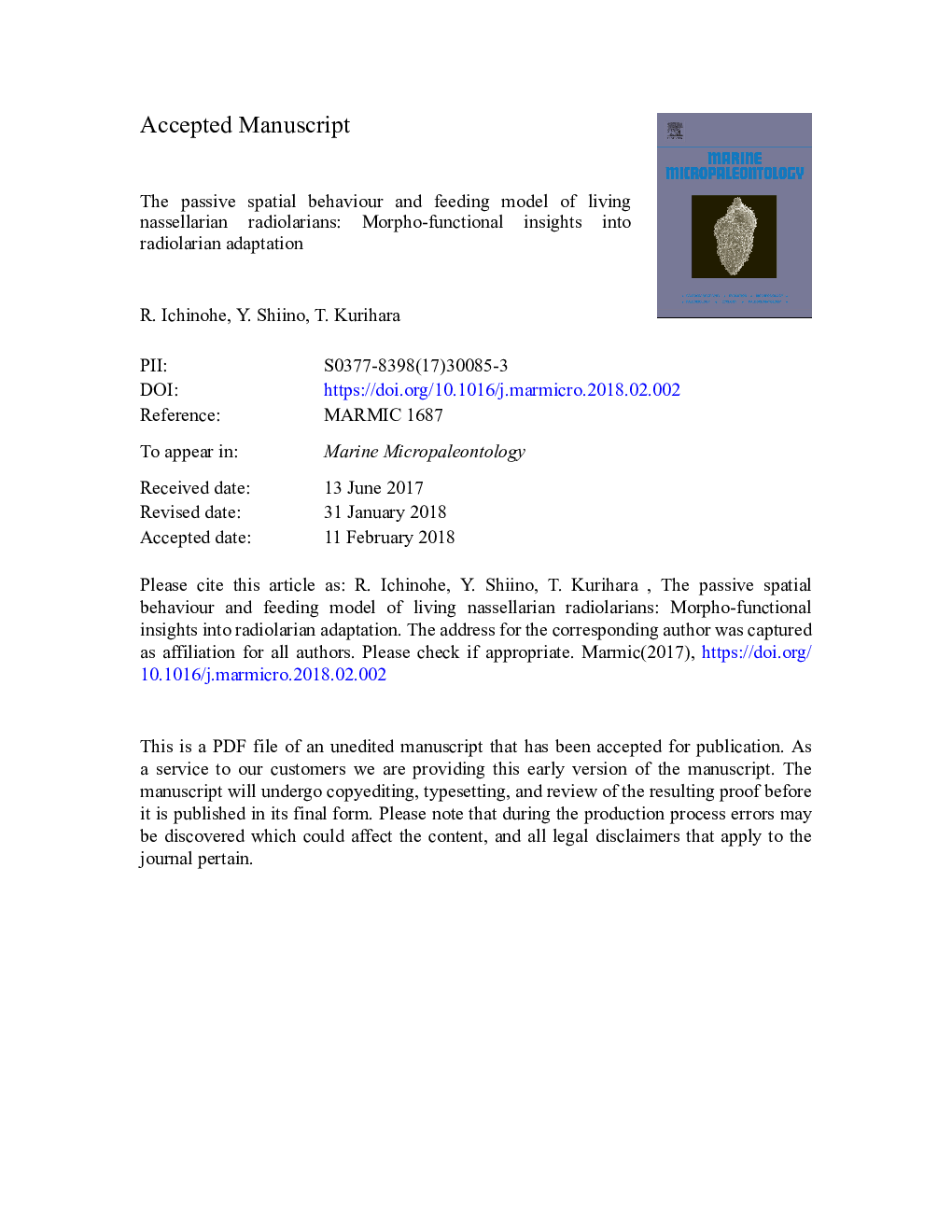| Article ID | Journal | Published Year | Pages | File Type |
|---|---|---|---|---|
| 8916506 | Marine Micropaleontology | 2018 | 44 Pages |
Abstract
Sinking experiments using living nassellarian radiolarians with a conical shell form were performed to examine the spatial behaviour of nassellarians and a related feeding model. A small water tank and surface-reflecting mirror were used to observe the vertical movement of each specimen, and the sinking posture and speed were analysed. The experimental results showed that the sinking posture of nassellarians was stable with a cephalis-down orientation, and the sinking speed was considerably slower than that of Dictyocoryne spp. as a control experiment. The stable posture was maintained by a streamlining shell form and the relationship between the centres of gravity and buoyancy. Moreover, a lift force in moving fluids would likely change the posture of the organism to the cephalis facing upstream, as in a weathercock effect. As a result, nassellarians were able to capture organic matter around the rear side of the aperture where prey-capturing pseudopodia are extended. Because the pseudopodia may be attributed to the lifelong performance of the surface of cell membranes, the drastic change in flow intensity around the pseudopodia leads to an easier collapse of the prey-capturing apparatus. A slower sinking speed as the size increases is a beneficial feature for avoiding the feeding risk, resulting in effective predation as a form of homeostatic spatial behaviour.
Related Topics
Physical Sciences and Engineering
Earth and Planetary Sciences
Palaeontology
Authors
Ryo Ichinohe, Yuta Shiino, Toshiyuki Kurihara,
